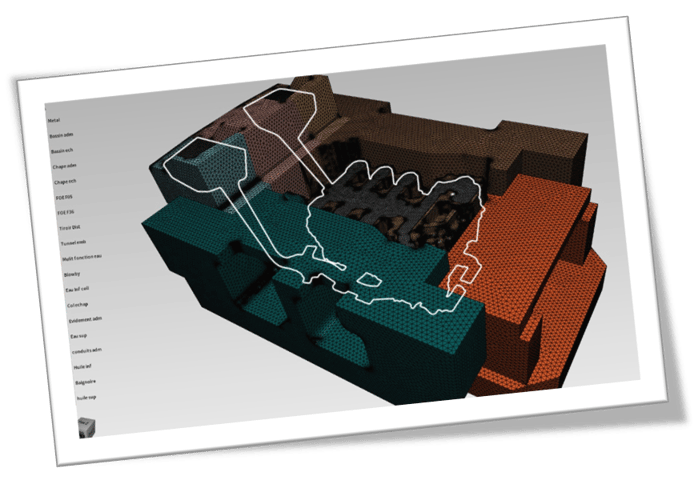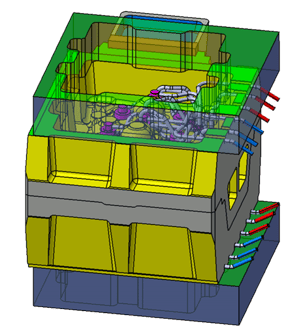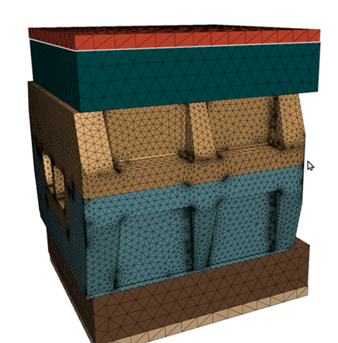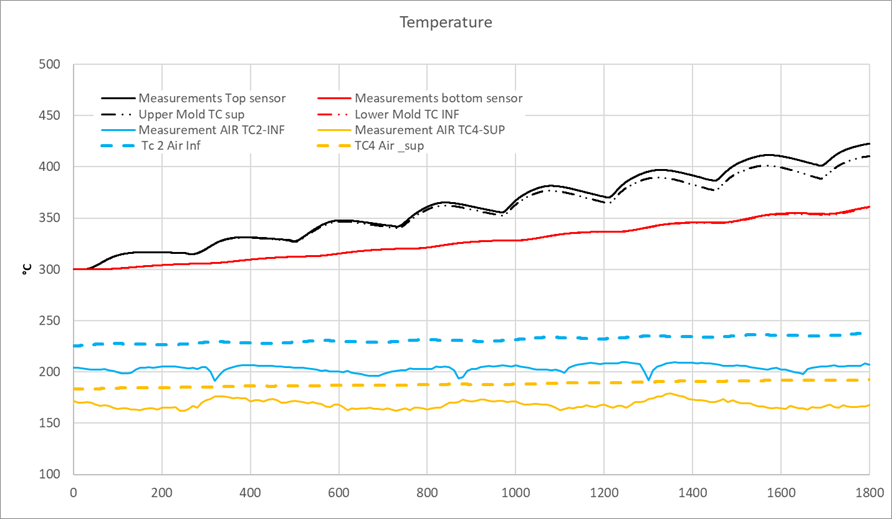During the international Tech Days tour, a series of Transvalor events dedicated to simulation, Mr. Jean Pierre Michalet, Technical Expert at STELLANTIS, presented ongoing work on the simulation of foundry processes.
Introduction
For many years, Transvalor has successfully developed its THERCAST® software in the field of continuous casting and ingot casting, both in France and internationally, thus gaining the trust of steelmakers. Building on this success, our teams have expanded its scope by applying its innovative techniques to the foundry industry. With its multitude of processes used for producing parts in various materials, foundry poses unique challenges that demand an advanced digital approach. This article explores the developments in the foundry world, particularly through the Stellantis-Transvalor partnership.
Stellantis commits to the digital revolution alongside Transvalor:
Stellantis, a global leader in the automotive sector, encompassing 14 brands operating in 30 countries, is embracing a digital approach to enhance its forging and foundry processes. With over 34 years of digital experience in these fields, the company launched the "digital boost" initiative in 2017, aiming to collaborate with scientific partners and software publishers to evolve its tools and working methods.
In this context, Stellantis has chosen to center its collaboration with Transvalor around the THERCAST® software. This decision stems from two factors:
- The excellence of the software's scientific foundation, which, with its multiphysics and two-phase models, proves particularly suitable for the multi-object processes of the foundry.
- The close relationship between Transvalor and CEMEF (Centre for Material Forming), ensuring the reliability and sustainability of the partnership.
Optimizing foundry processes with THERCAST®:
To minimize the number of trials and errors, thus reducing development cycles while optimizing tooling and process technology times, Stellantis conducted simulations and optimizations of various foundry processes, including high-pressure die casting (HPDC), gravity casting of aluminum and iron (Sand mold or dies), and the lost foam process.
The THERCAST® solution was chosen for its strong fundamentals that meet industrial needs. Firstly, its multiphysics approach allows for the simultaneous consideration of various phenomena, such as self-radiation, the impact of air and water in cooling channels, as well as the complete kinematics of the tooling. Its two-phase solver enables the study of complex flow scenarios by handling air/alloy interactions in real quantities. Changes in the state of matter (liquid, mushy, and solid) are treated together. Additionally, the thermal-hydraulic-mechanical coupling of THERCAST® provides a comprehensive understanding of interactions between different process phenomena and elements.
The anisotropic mesh generator ensures accurate results by adapting the mesh size throughout the calculation for all part and tooling geometries. Lastly, the kinematic module allows for the consideration of the movements of each molding element in their true temporal displacements while calculating the effects on the deformations of parts and tooling (including cores and inserts) during the cycle, from filling to ejection. This module is particularly useful in gravity shell aluminum and HPDC to precisely consider thermal and mechanical interactions between these elements during movements.

The use of these advanced features has enabled Stellantis to address industrial issues that were previously difficult to understand and solve. With THERCAST®, it is possible to study and understand the thermal behaviors of certain tooling in greater detail.
This work has led to the definition of "stabilization" solutions for existing tools and has simultaneously facilitated the study and development of more suitable new tooling. Indeed, these modifications also optimize cycle times significantly and reduce the rejection rate.
 |
 |

Comparaison capteurs thermique réels / simulations
Analysis of Clamping and Deformation Risks During Opening and Ejection
Case Study: The Lost Foam Process
Lost Foam Process at Stellantis: A Quest for Innovation
The Lost Foam Process is an advanced technique in foundry that enables the manufacturing of intricately shaped parts with high finishing quality and low environmental impact. It involves the use of an expanded polystyrene model of the desired part, which is submerged in a sand mold. During the casting of the molten metal alloy, the polystyrene model vaporizes, leaving behind the desired shape. This process is currently under investigation for the production of next-generation automotive engine components.
Stellantis is interested in the numerical simulation of this process for two primary reasons. Firstly, the aim is to control the thermal environment and mold filling, elements that ensure the quality of the part and thus the performance of the industrial process. Once this capability is acquired, it will represent a significant advantage by supporting project design from the early stages, thus avoiding the need for trial and error.
Secondly, Stellantis seeks to better understand the various phenomena that influence cooling, including melting, phase changes, evacuation of gas residues, and exchanges with the mold walls. The simulation must therefore consider and master the multiphase and multiscale aspects of the flow.
A thesis, funded by Stellantis, is currently underway at CEMEF, focusing on the modeling and advanced simulation of the Lost Foam Process. Its aim is to meet the company's needs in terms of understanding and mastering this innovative process.
The presentation of this work highlights CEMEF's expertise, particularly the Intensive Calculation and Fluid Mechanics (CFL) team, in the development of numerical models to address foundry industry questions. Transvalor has continuously integrated this thesis work into the THERCAST® software to enable Stellantis to benefit from these developments. This represents a significant industrial advantage, as it directly showcases the research efforts, notably through the remarkable precision with which experimental and numerical results have been compared on typical parts.
The software now offers a beta version including the Lost Foam process. This tripartite collaboration is thus a success, offering new perspectives for the foundry industry.
Conclusion
The partnership between Transvalor and Stellantis, realized through the use of the THERCAST® software, has allowed for a deeper understanding of the phenomena involved in foundry, spanning various processes. Thanks to this advanced digital approach, Stellantis can optimize its processes, solve complex issues, and accurately forecast different stages of its production process. Continuous and integrated developments in THERCAST®, in collaboration with the CFL team at CEMEF, herald a promising future for this alliance.


